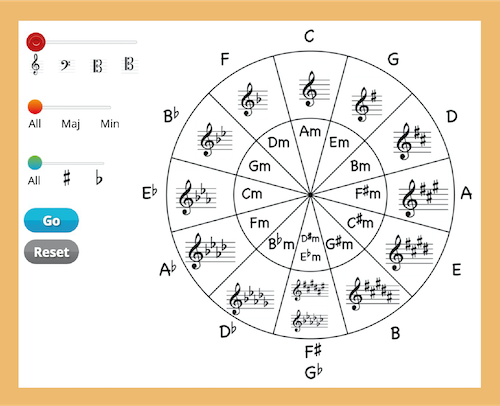
Welcome to the circle of fifths complete guide! The circle of fifths is a concise diagram that gives you all the information you need to understand and play any piece of music. You will easily be able to work out key signatures, chords and scales in a very easy to digest way.
After learning how to read music on the stave, knowing the circle of fifths is your next step in learning music theory and becoming the best musician you can be.
This is perhaps the best tool to improve your musical abilities!
[thrive_leads id=’14034′]
Where did the circle of fifths start?
From what we can see in the history books, the circle of fifths was invented by Pythagoras in 600BC. Pythagoras, through many experiments, was able to find out what an octave was and divided it up into the twelve steps that we know today! This became known as the Pythagorean circle.
Throughout the many years that followed, different revisions and improvements were made by Nikolay Diletsky in the 1670s and by John David Heinichen in the 1720’s. Until we landed at the circle we have today!
What is the circle of fifths?
The circle of fifths is quite literally a circle that shows all 12 major and minor keys. The circle is broken up into 12 sections, one for each pitch in the chromatic scale. It also resembles a clock face, which makes it very easy to read!
The circle shows all 12 notes of the chromatic scale and moves clockwise in fifths. There are 12 notes in western music, hence why we have 12 sections on the circle.
When we talk about a fifth we literally mean five notes up from your starting note. Take a look at the scale below to see what we mean!
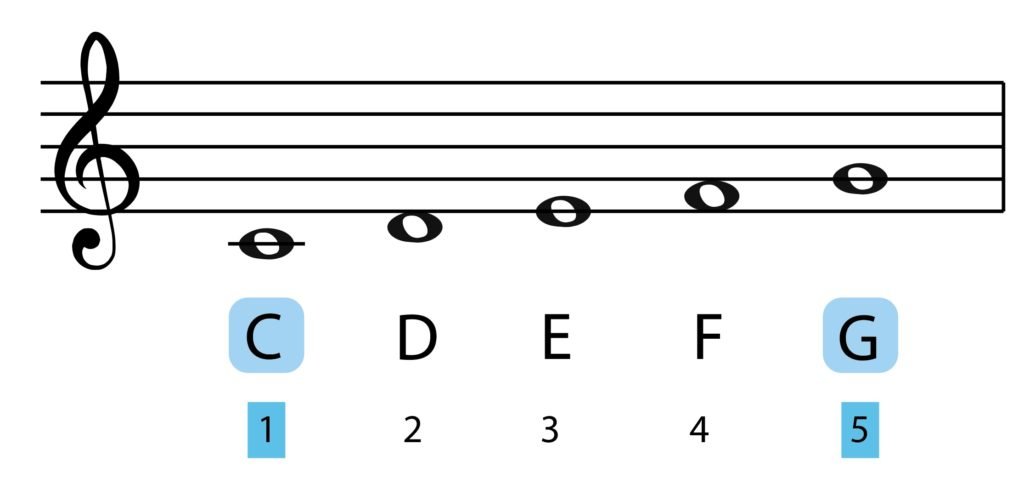
As you can see, G is five notes above C. This means the next scale on the circle will be G major.
An interval of a fifth is also equal to 7 semitones. Sometimes this can be easier to work out. Take a look at the piano below to see how this works.
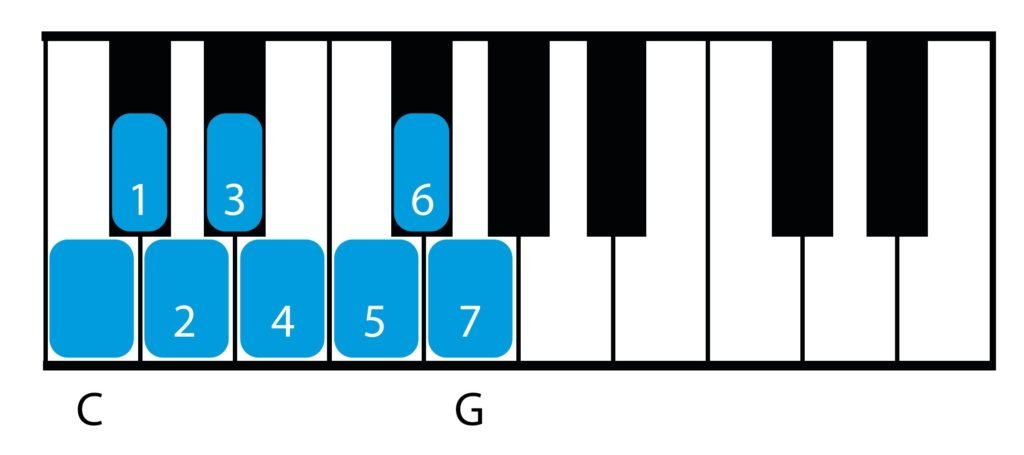
If you move anti-clockwise the circle moves in fourths (or 5 semitones)
For example:
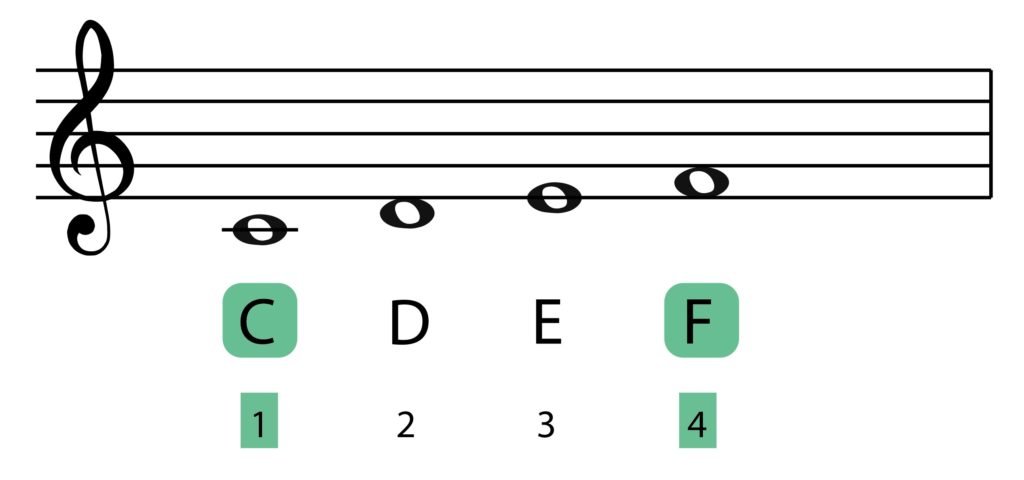
F major is the next scale anti clockwise on the circle
A fourth is also equivalent to 5 semitones.
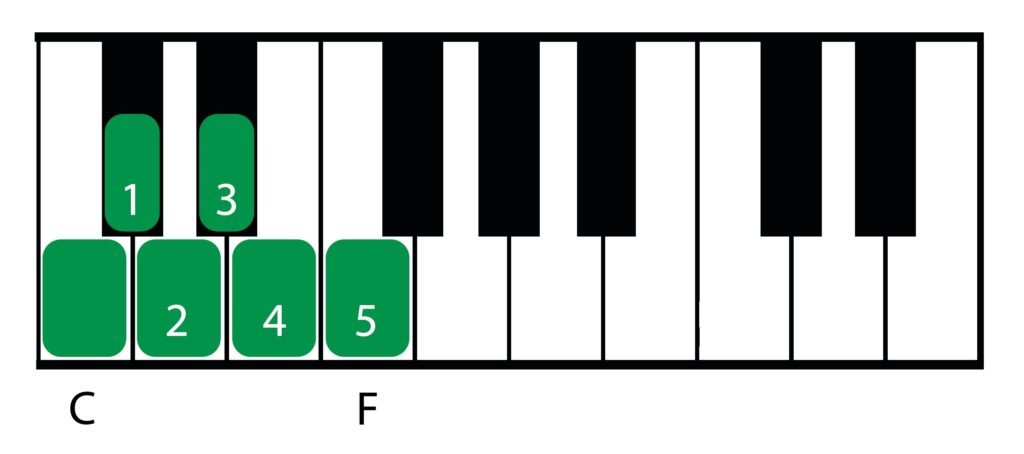
Alternatively, you can count backwards five notes when you go anti clockwise. This may be easier to visualise but does require you to be able to know your scales backwards.
For example

If we go backwards 5 notes this also takes us to F major!
Decide which way you find easiest and stick to it!

[thrive_leads id=’12645′]
What does the circle show us?
The circle of fifths helps you to recognise key signatures. The key signature shows you how many sharps or flats a key/scale contains.
At the top of the circle of fifths is always the key/scale of C major. C major is always at the top because this scale has no sharps or flats.
If you make one step clockwise, the next scale will have one sharp, the next step will then add a second sharp and so on and so forth. Gradually the sharps add up one at a time.
We always keep the same sharp from the previous scale and just keep adding to the end.
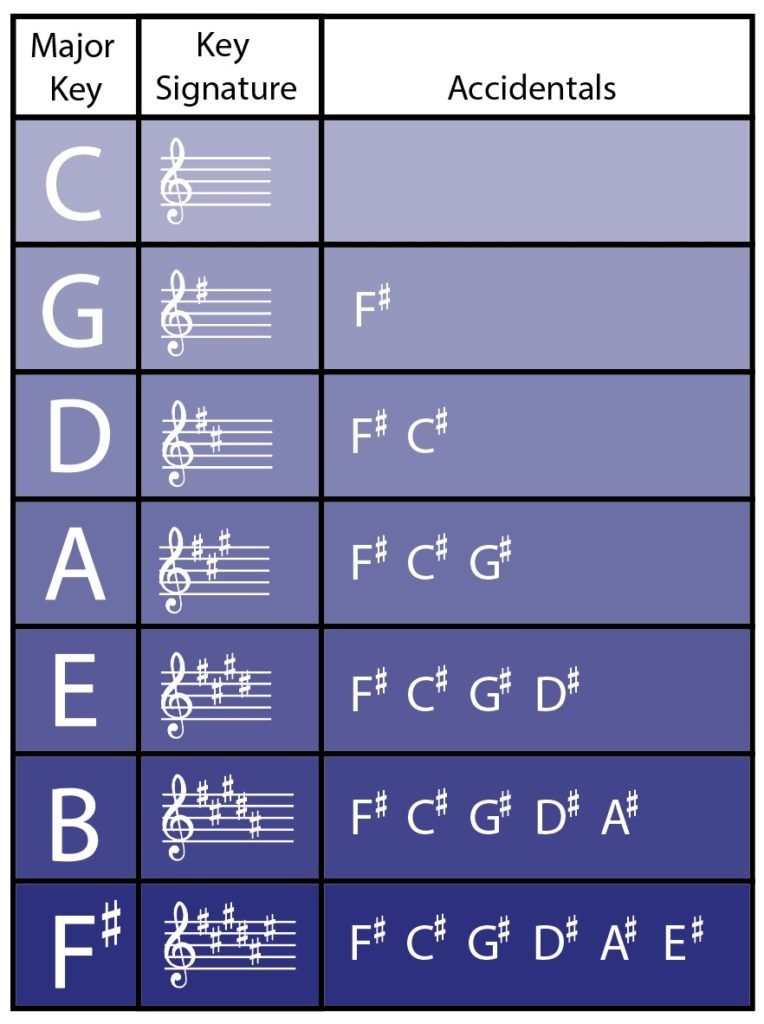
If you go anti clockwise each step adds a flat. To the left of C major, you will have F major which has one flat, then another step will take you to B flat major which has two flats and so on and so forth.
This is extremely useful, when you see a key signature of three flats, you will then know you are playing a piece in E flat major! As long as you have learnt your circle of fifths!
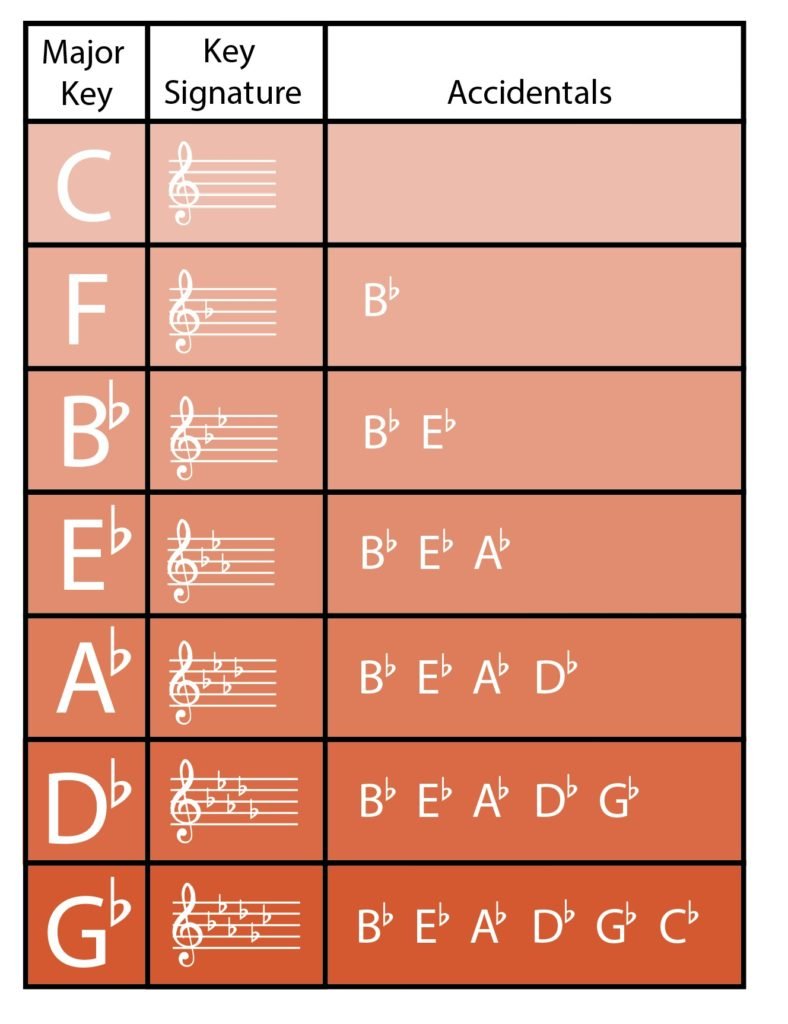
How can I remember the order of my sharps and flats?
Remember – The order of flats and sharps is always the same. The easiest way to remember this is by memorising this rhyme!
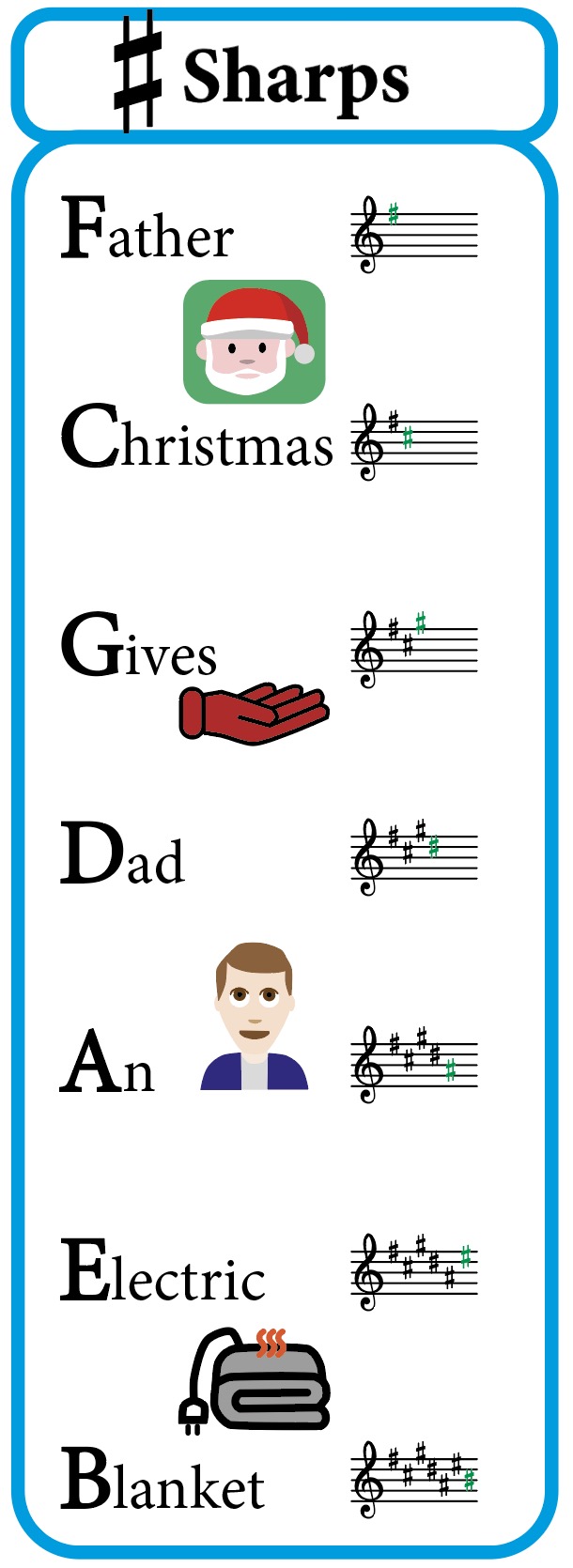
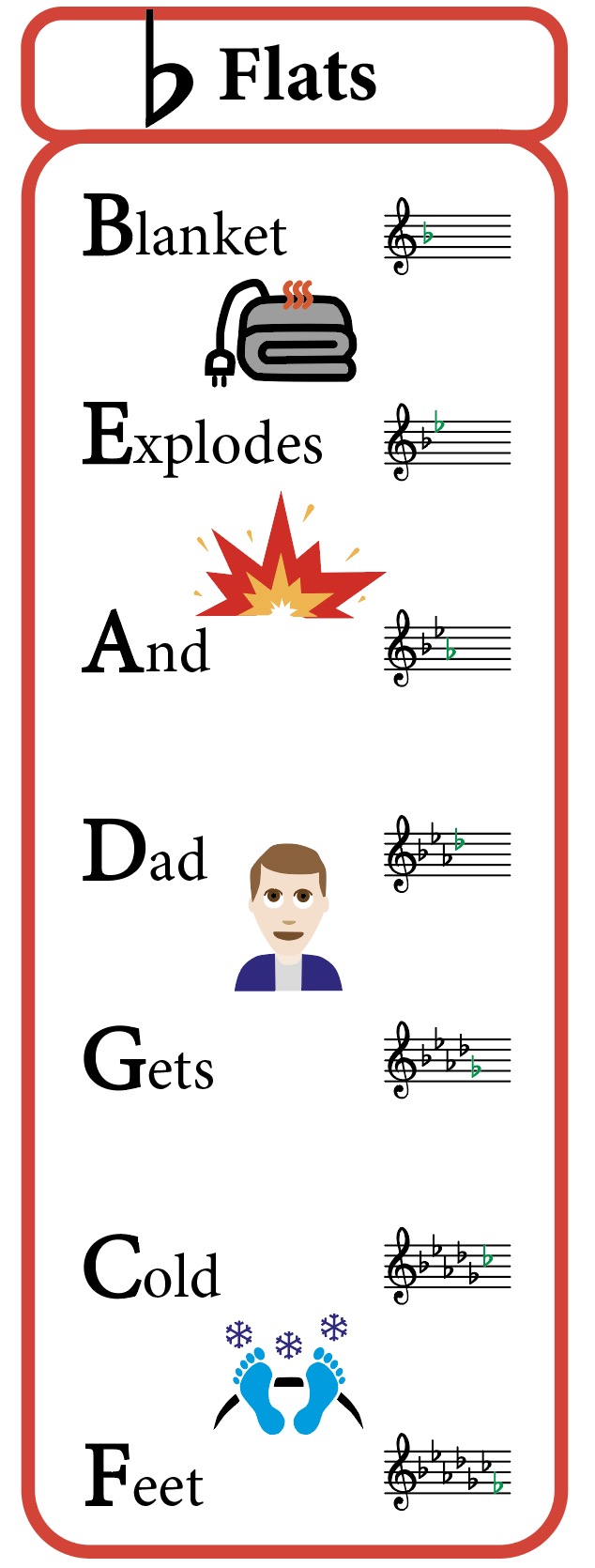
Or why not create your own rhyme?!
What does a key signature tell you?
Every piece has to have a key and the way we know what key we are in is by looking at the key signature.
Remember, the key signature tells you what the key/scale is and what notes to play.
If you know the key you will know three important things:
- The important notes in the key (like which note is the tonic!)
- The scales, chords and modes in that key.
- The notes that are diatonic to the key, and when a non-diatonic note appears in the form of an accidental.
The key signature is like a rule book that keeps stops you playing a wrong note (wrong for the key anyway!)
The key signature at the start of the piece of music also informs you that every one of that particular note will be flat or sharp. For example, if you are in the key of G major, the F sharp in the key signature means every F in the piece must be sharp.
[thrive_leads id=’14034′]
What goes in the middle of the circle?
In the middle of the circle we always write in the relative minor scale. Remember, every major scale has a relative minor scale!
In order to find out the relative minor to each of these major scales, you must go to the 6th note of the major scale!
For example, the 6th note of C major is A. Meaning the relative minor of C major is A minor! Both scales share the same key signature.
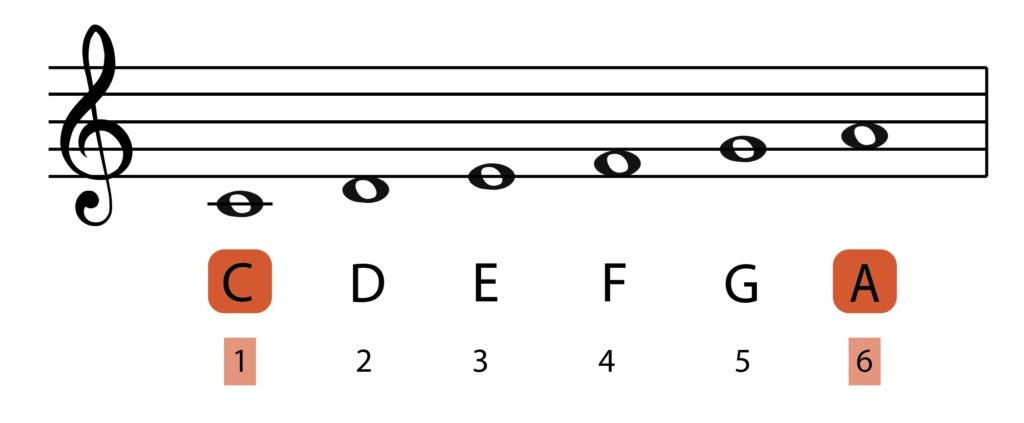
Tips and Tricks
How can you work out what scale you are in, simply by looking at the key signature? There are a couple of tricks!
- This first trick is relevant to flat key signatures.
If you look at the second last flat that occurs in the key signature, this is the name of your key! For example, if you take a key signature of three flats

Look to the second last flat

The second last flat here is E flat, so the key signature is that of E flat major!
2. The second trick is relevant to sharp key signatures
This trick is slightly different to the trick above. To work out your sharp scale, simply look at the last sharp, move up by one note, and this is the name of your scale!
For example, look at the key signature below

The last sharp is a D sharp! One step up from D is E. Therefore, this is the key signature of E major!
How do you Memorise the Circle of Fifths?
It is so important to spend time practicing to draw your circle of fifths. ing out the major scales from memory, they add in the minor scales. If you want some support with this then check out our interactive circle of fifths. Also really try and use it practically, for example, use it in your music practice when you are playing scales!
Interactive Circle of Fifths
Make sure to check out our interactive circle of fifths too. This allows you to see just the major or minor keys. Or you can view all the key signatures in the treble, bass, alto or tenor clef. It is great for practising your key signatures and when you want to focus in on one aspect of the circle.
[thrive_leads id=’12645′]

